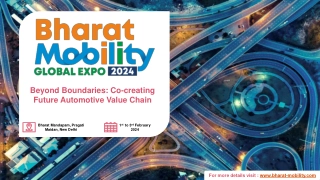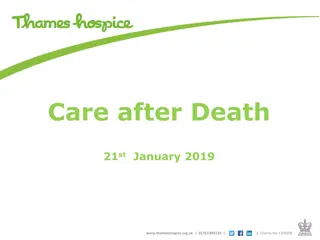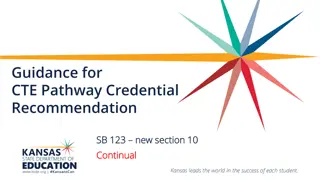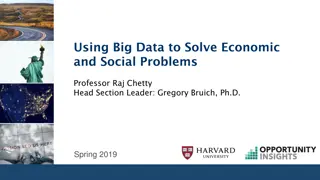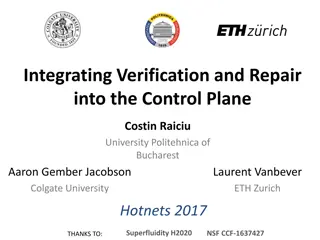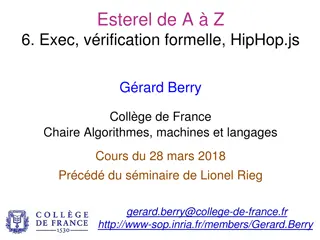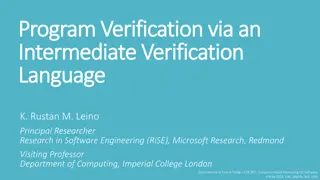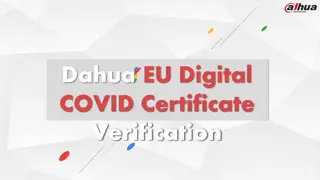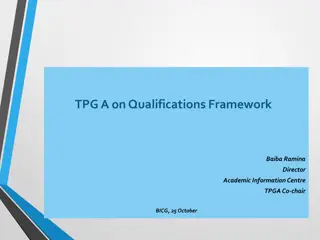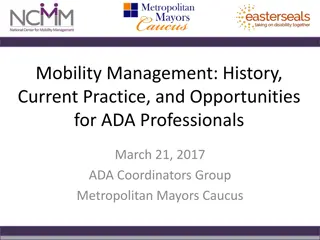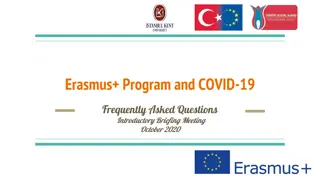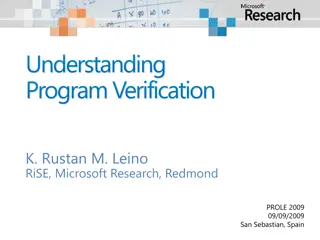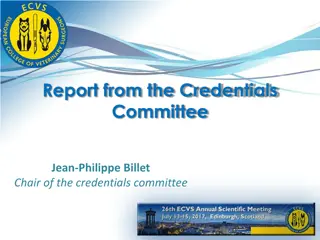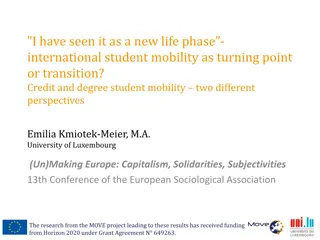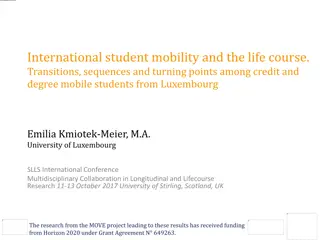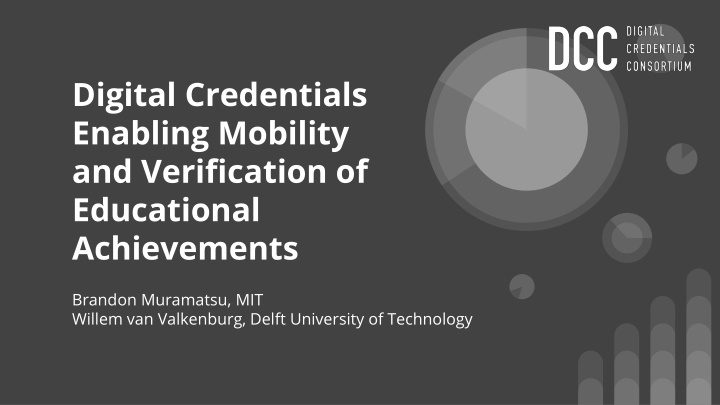
Empowering Educational Achievements with Digital Credentials Consortium
Explore how the Digital Credentials Consortium (DCC) is revolutionizing the verification of academic accomplishments through a trusted, decentralized infrastructure. Discover DCC's guiding principles, founding members, and innovative work in enabling mobility and verification of educational achievements.
Download Presentation

Please find below an Image/Link to download the presentation.
The content on the website is provided AS IS for your information and personal use only. It may not be sold, licensed, or shared on other websites without obtaining consent from the author. If you encounter any issues during the download, it is possible that the publisher has removed the file from their server.
You are allowed to download the files provided on this website for personal or commercial use, subject to the condition that they are used lawfully. All files are the property of their respective owners.
The content on the website is provided AS IS for your information and personal use only. It may not be sold, licensed, or shared on other websites without obtaining consent from the author.
E N D
Presentation Transcript
Digital Credentials Enabling Mobility and Verification of Educational Achievements Brandon Muramatsu, MIT Willem van Valkenburg, Delft University of Technology
Today A brief intro to the Digital Credentials Consortium Two case studies GDPR and Digital Credentials, Delft University of Technology Open Source Learner Credential Wallet, MIT
Digital Credentials Consortium Our mission is to create a trusted, distributed, and shared infrastructure that will become the standard for issuing, storing, displaying, and verifying academic credentials, digitally.
DCC Founding Members Delft University of Technology (The Netherlands) Tecnol gico De Monterrey (Mexico) Technical University of Munich (Germany) Georgia Institute of Technology (USA) Harvard University (USA) University of California at Berkeley (USA) Hasso Plattner Institute, University of Potsdam (Germany) University of California, Irvine (USA) Massachusetts Institute of Technology (USA) University of Milano-Bicocca (Italy) University of Toronto (Canada) McMaster University (Canada)
DCC Guiding Principles Learners Issuers Learners retain primary control over their credentials. Learners consent is required for issuance of digital credentials. Learners decide to whom they grant access. Barriers to receiving and managing credentials are minimal to enable broad participation. Issuers control to whom they issue credentials, the particular achievement that the credential represents, and which credential options are available to the learner. Issuers can revoke credentials according to their institution s policies. Barriers to issuing credentials are minimal to enable broad and diverse participation. Trust: Everyone is able to review how the infrastructure and processes work. Trust in the integrity of the credentials is established cryptographically. Credentials can be verified without consulting the original issuer.
How does DCC do its work? Consortium of members with alignment to guiding principles, and each working in similar ways on digital credentials DCC does its work through open standards organizations primarily the W3C Verifiable Credentials for Education (W3C VC-EDU) Community Group Coordinates with IMS Global on Comprehensive Learner Record and Open Badges v3 specifications Shared technical work through a Technical Working Group made up of DCC members Implementing Verifiable Credentials (VC) and Decentralized Identifiers (DID) specifications Meet key DCC guiding principles of learner control
General Data Protection Regulation and Blockchain
General Data Protection Regulation (GDPR) The European Union's General Data Protection Regulation become binding in May 2018. Goal of GDPR: 1. to facilitate free movement of personal data between EU members states 2. to establish a framework of fundamental data rights protection. The legal framework creates a number of obligations resting on data controllers (entities determining the means and purpose of data processing) The legal framework creates a number of rights to data subjects (the natural persons to whom the personal data relates) to be enforced by data controllers. E.g. Article 16 GDPR right to rectification, Article 17 GDPR right to erasure ( right to be forgotten )
Leading principles of GDPR organisations need to make sure their data collection practices don t break the law and that they aren t hiding anything from data subjects. Lawfulness, fairness and transparency Organisations should only collect personal data for a specific purpose, clearly state what that purpose is, and only collect data for as long as necessary to complete that purpose. Purpose limitation Organisations must only process the personal data that they need to achieve its processing purposes. Data minimisation The accuracy of personal data is integral to data protection. The GDPR states that every reasonable step must be taken to erase or rectify data that is inaccurate or incomplete. Accuracy Organisations need to delete personal data when it s no longer necessary. Storage limitation Personal data should be processed in a manner that ensures appropriate security of the personal data, including protection against unauthorised or unlawful processing and against accidental loss, destruction or damage, using appropriate technical or organisational measures. Integrity and confidentiality (security) The controller shall be responsible for, and be able to demonstrate compliance with the above principles Accountability
Source:https://www.bankinghub.eu/banking/finance-risk/gdpr- deep-dive-implement-right-forgotten
GDPR and Blockchain The GDPR is based on assumptions that creates tension with blockchain. GDPR Blockchain in relation to each personal data point there is at least one natural or legal person the data controller whom the subjects can address to enforce their rights under EU Data protection law. decentralizes to many actors and allocation of responsibility and accountability is burdensome. data can be modified or erased where necessary to comply with the legal requirements of GDPR Article 16 (right to rectification) and 17 (right to erasure ( right to be forgotten ) Modification and erasure of data is made onerous to ensure data integrity and increase trust in the network.
Personal data on the Blockchain? In the pilot we explored the following: Is data that is encrypted or hashed/ anonymized still quality as personal data as per the GDPR requirements of anonymisation? How is the right to erasure/right to be forgotten dealt with in the pilot?
The right to be forgotten is not an absolute right if a learner requests to be forgotten, Accredify deletes their personal data. The learner is the one who should contact institutes where they have personally shared their opencert file which could be still verified. What happens now is that Accredify deletes personal data from their system which is GDPR complaint. This is because the right to be forgotten does not extend to all the institutes where the learner shared their file. If a certificate is revoked and cannot be verified in the future that doesn t say much so it is good to add an explanation.
Hashing, salt and peppering of personal data As long as the hash relates to something it is not anonymised. This is the current conflict within blockchain and GDPR and the interpretation of what is considered as anonymous.
Open Source Learner Wallet MIT MIT Team Brandon Muramatsu Philipp Schmidt Gillian Walsh Dmitri Zagidulin
About the Open Source Learner Wallet Project A key missing ingredient in a digital credential infrastructure Prioritizes learner agency Enables trust Supports diverse institutions A learner credential wallet specification (May 2021) An open source learner wallet mobile app, eduWallet A pilot with U.S. institutions: College Unbound, Georgia Tech and San Jose City College MIT xPRO and University of North Texas / Concentric Sky
Details on eduWallet An Open Source Learner Wallet Both Android and iOS versions Going into pilot testing December 2021 January 2022 Key features Login to secure wallet Add verifiable credentials via deep link (direct and QR Code) and via QR code Display credentials locally Issuer, issuer logo, credential name, issuance date Select and share credentials as JSON-LD via operating system sharing mechanisms (copy to clipboard, save as file) Delete credentials, backup and restore from file
Demo Login to a LMS or student portal Prompted to install eduWallet from Apple or Google Play app stores First time setup of eduWallet (Simulated) Access credential via LMS / QR Code / Deep Link (Not demonstrated) Authenticate before receiving credential View credentials (and share them)
Questions? Brandon Muramatsu mura@mit.edu Willem van Valkenburg w.f.vanvalkenburg@tudelft.nl

